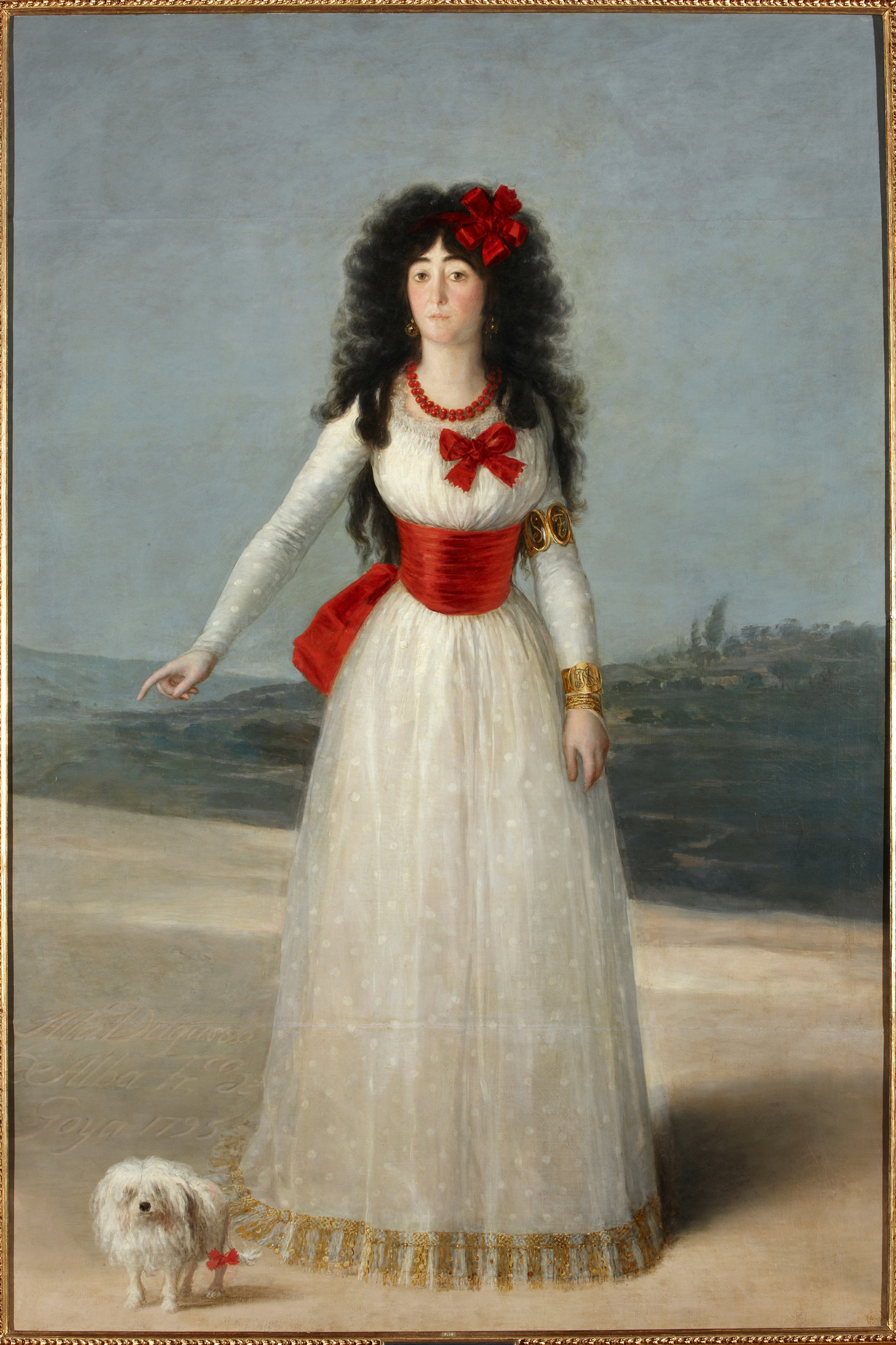Review: ‘Treasures From the House of Alba: 500 Years of Art and Collecting’
A review by Lance Esplund of The Wall Street Journal.
By Lance Esplund
Midway through “Treasures From the House of Alba: 500 Years of Art and Collecting,” you encounter Francisco de Goya’s mysterious full-length, life-size masterpiece “The Duchess of Alba in White” (1795). The official portrait of the duchess, she’s also the unofficial centerpiece of this stunning exhibition of more than 140 artworks. It’s like your hostess coming late to the party. You don’t mind because you’re already giddy—drunk on art—and she’s absolutely ravishing.
 The Duchess of Alba in White, 1795, Francisco de Goya y Lucientes (Spanish, 1746-1828) . Oil on canvas. Colección Duques de Alba, Palacio de Liria, Madrid. |
Goya’s “Duchess,” elegantly poised, standing with her tiny dog in the Spanish landscape, is stately yet evanescent. She towers over, anchors and binds together foreground, distant townscape, misty hills and greenish-gray-blue sky. Her white chemise gown is iridescent and translucent; tied with a wide red sash, it sets her body in motion like a spinning top. Her long, black, curly tresses pour prodigiously down her shoulders and back. Though she is as solid and riveted as an oak, she appears to hover like an apparition. You sense that she had dreamed up this soft-focus world with its precariously tilting horizon line—and that if not for the duchess, who points to the landscape (and Goya’s prominent signature), Spain would topple and dissolve.
Though she is as solid and riveted as an oak, she appears to hover like an apparition. You sense that she had dreamed up this soft-focus world with its precariously tilting horizon line—and that if not for the duchess, who points to the landscape (and Goya’s prominent signature), Spain would topple and dissolve.
It’s not farfetched. When her close friend Goya painted this portrait, one of several Goyas depicting the 13th Duchess of Alba (1762-1802), she was second in power only to the queen, and she and the duke were the wealthiest couple in the kingdom of Spain. It was said then that you could walk from Portugal to France and never leave Alba land.
The first major exhibition of its kind in the U.S., “The House of Alba” celebrates the 50th anniversary of Dallas’s Meadows Museum at Southern Methodist University. Devoted solely to Spanish art, it was envisioned by founder Algur H. Meadows as a “Prado on the Prairie.” Curated by Fernando Checa Cremades, the former director of Madrid’s Prado Museum, the show is both family reunion and extended family portrait. As rich in masterpieces as it is in history, it features paintings by El Greco, Peter Paul Rubens, Titian, Jusepe de Ribera, Velázquez, Bartolomé Esteban Murillo, Anton Raphael Mengs and Jean-Auguste-Dominique Ingres. Here, too, are “The Bible of the House of Alba,” one of the earliest known translations of the Old Testament from Hebrew into a Romance language, and Christopher Columbus’s logbooks, in which he lists the 40 crew members on the 1492 voyage and has drawn, arguably, the first European map of the New World. But the exhibit also has outstanding drawings, prints, sculptures, tapestries, furniture and decorative arts.
Read more about “Treasures From the House of Alba: 500 Years of Art and Collecting.”